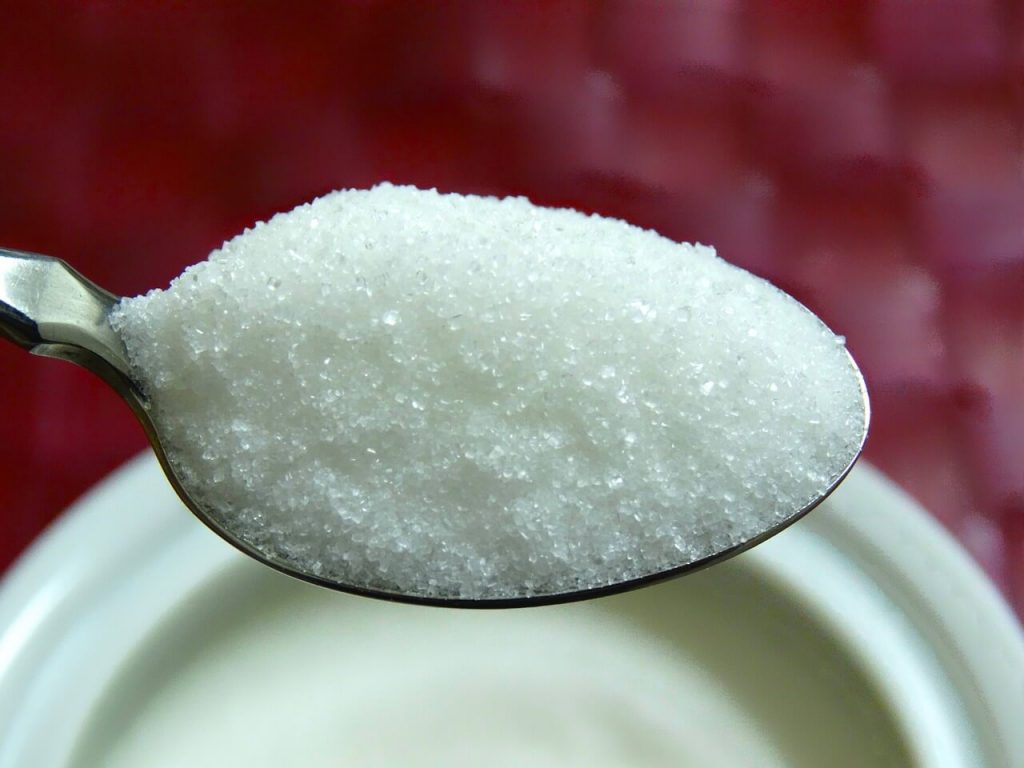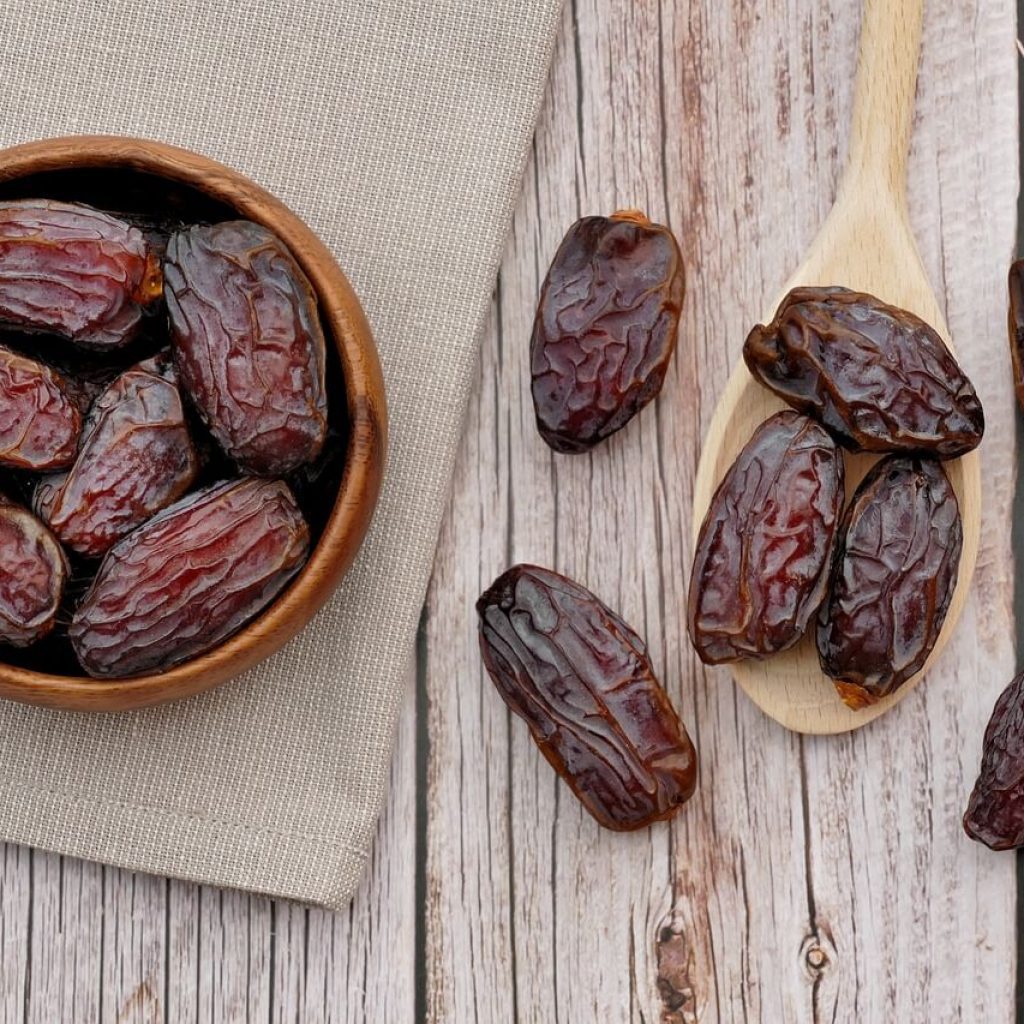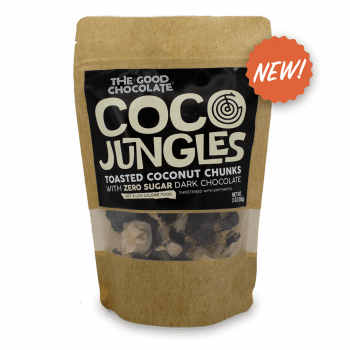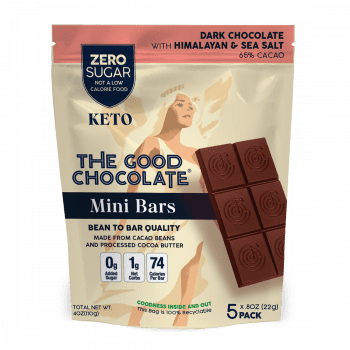FREE SHIPPING ON ORDERS OVER $50
JOIN TO ENJOY 10% OFF

Picture this: You’re standing in the chocolate aisle, craving something sweet but trying to be mindful of your sugar intake. Your eyes dart between labels proclaiming “zero sugar,” “sugar free,” and “no sugar added.” Suddenly, what should be a simple treat run turns into a confusing conundrum. Today, if you’re keeping track, there’s also date sugar and coconut sugar with even more confusing use of “No Added Sugar” or “No Refined Sugar” claims. So if you’ve ever found yourself in this sticky situation, you’re not alone. Let’s dive into the delicious world of healthier chocolate options and demystify these sweet labels once and for all.
Before we sink our teeth into the differences between these chocolate varieties, let’s talk about why so many of us are watching our sugar intake in the first place. We’ve all heard the warnings: too much sugar isn’t doing our health any favors. From weight gain to increased risk of diabetes and heart disease, the potential downsides of a sugar-heavy diet are hard to ignore.
But here’s a shocking statistic that might make you think twice about your sweet tooth: the average American consumes about 100 pounds of sugar per year. That’s right, 152 pounds! Break that down, and we’re looking at about 30 teaspoons of sugar every single day. Now, compare that to what health experts, including the American Heart Association, suggest: we should cap our daily added sugar intake at about 6 to 9 teaspoons. No wonder people have started scrutinizing sugar in their diet – there’s a lot to cut.
This sugar overload isn’t just coming from obvious sweets like candies and sodas. It’s hiding in many of our everyday foods, from breakfast cereals to salad dressings. That’s why being mindful about our sugar intake, even in treats like chocolate, can make a big difference in our overall health.
This sugar overload isn’t just coming from obvious sweets like candies and sodas. It’s hiding in many of our everyday foods, from breakfast cereals to salad dressings. That’s why being mindful about our sugar intake, even in treats like chocolate, can make a big difference in our overall health.
But don’t worry – this doesn’t mean you have to break up with chocolate. Far from it! It just means we need to get a bit savvier about our choices. And that’s where our sugar-free and no-sugar-added friends come into play.
When you see “sugar free” or “zero sugar” on a chocolate bar, it’s not magic – it’s science. These chocolates are specially crafted to contain less than 0.5 grams of sugar per serving based on the FDA guidelines. But don’t think for a second that means they’re not sweet. Chocolatiers have gotten more clever with sugar alternatives.
Most sugar-free chocolates use sugar alcohols to bring the sweetness without the sugar spike. But not all sugar alcohols are created equal, and this is where it gets interesting. You’ll often see three main players in the sugar-free chocolate game: erythritol, xylitol, and maltitol.
Erythritol is the superstar of the bunch. It has zero calories, doesn’t affect blood sugar levels, and is much less likely to cause digestive issues compared to its cousins. Plus, some studies suggest it may have antioxidant properties. That’s why we at The Good Chocolate are big fans of erythritol.
Xylitol and maltitol, while still lower in calories than sugar, aren’t quite as impressive. They have more calories than erythritol (about 2.4 and 2.1 calories per gram, respectively), and they can have a more noticeable effect on blood sugar. Plus, they’re more likely to cause tummy troubles if you overindulge.
The Good Chocolate adds a high intensity sweetener, stevia to help achieve sugar’s sweetness profile. But some brands use high intensity sweeteners like stevia and monk fruit on their own, but they often create an “off” aftertaste not normally found in chocolate.
Now, “no sugar added” chocolate is a distinction with a difference. These bars contain some sugar – you can see exactly how much in the Total Sugar line of the Nutrition Fact Panel, but it’s the kind of sugar that occurs naturally in the ingredients – think lactose from milk or the small amount of sugar naturally present in an inclusion like coffee. At The Good Chocolate, our milk chocolate has to be labeled “no sugar added” for this very reason.

Some chocolates are made with dates and boast, “No Sugar Added” on the label, but show high levels of Total Sugar in the Nutrition Facts. This is because the FDA defines added sugar in a somewhat confusing way. Sugars from honey, fruit juice and other sources that are in excess of what would normally be found in a food of the same type are considered “Added Sugar.” However, whole fruits like dates used as ingredients are not considered added sugars – even if used primarily as a sweetener.
The FDA’s rationale is that whole fruits bring along other nutrients like fiber, vitamins and minerals not solely used for sweetening. Even though chocolates made with dates are sweet and contain as much sugar as chocolates made with refined sugar, they may still claim, “No Added Sugar”, even though none of the expected benefits from a chocolate without added sugar are present, like lower calorie or lower glycemic index. And while the levels of vitamins and minerals may be so low as to be meaningless, the fact they exist in chocolate sweetened with date sugar can be overstated in marketing.

There are also chocolates on the market made with coconut sugar that state, “No Refined Sugar” but similar to sweetening with dates, show high Total Sugar content on the nutrition fact panel. It is true that coconut sugar is less refined than sucrose: it’s made by extracting sap from coconut palm trees, then boiling and dehydrating it. This process is relatively simple and doesn’t involve the extensive refining that white sugar undergoes. Refined sugar, typically referring to white table sugar, goes through a complex refining process that strips away all the molasses and other compounds, leaving pure sucrose. This refining process removes any trace minerals or other nutrients that might have been present in the original plant source.
Therefore, while coconut sugar is still a form of sugar and provides similar calories to refined sugar, it can be marketed as “unrefined” or “less refined.” This allows products using coconut sugar to claim they contain “no refined sugar.” It’s important to note that from a caloric and carbohydrate perspective, coconut sugar is very similar to regular sugar. And similar to date sugar, the health benefits of the trace nutrients in coconut sugar can be overstated in marketing.
When it comes to date sugar, it’s crucial to understand that “No Added Sugar” doesn’t mean that Total Sugars are necessarily lower than chocolates made with refined sugar. It may be the same or higher. Similarly, for chocolates made with coconut sugar, “no refined sugar” doesn’t necessarily mean “low in sugar” or “healthier.” The total sugar content and calorie count may be similar to products made with refined sugar. As always, checking the nutrition facts label provides the most accurate information about the product’s nutritional content.
Here’s the beautiful thing: there’s no one-size-fits-all answer. It really depends on what you’re looking for. If you’re aiming to keep your sugar intake as low as possible, sugar-free might be your go-to. If you’re all about milk chocolate and don’t mind a bit of natural sugar, no-sugar-added could be your perfect match.
And let’s not forget – there’s more to chocolate than just its sugar content. The percentage of cocoa, the type of fats used, and even the origin of the beans all play a part in making a chocolate bar great. So don’t be afraid to explore and find what tantalizes your taste buds while aligning with your health goals.
By contrast, if you are set on lowering your calorie and sugar intake, it would probably be wise to steer clear of “No Sugar Added” chocolate made with date sugar or “No Refined Sugar” chocolate made with coconut sugar, because of the total sugar still present in these kinds of bars.
At the end of the day, whether you go for sugar-free, no-sugar-added, or even the occasional regular chocolate treat, the key is mindful enjoyment. Savor each bite, appreciate the flavors, and remember that a little indulgence, when done right, can be a perfectly healthy part of a balanced lifestyle.
So next time you find yourself puzzling over chocolate labels in the store, you can confidently reach for the option that suits you best. After all, life’s too short for chocolate-related stress. Now, if you’ll excuse me, I have a meeting with a square (or two) of dark chocolate. Care to join?
AUTHOR

SHARE FOR GOOD KARMA
MORE POSTS
Good things happen to those who read ; )
SPECIAL 15% OFF for BETTER BE GOOD blog launch!
Use code: betterbegood15 at checkout


